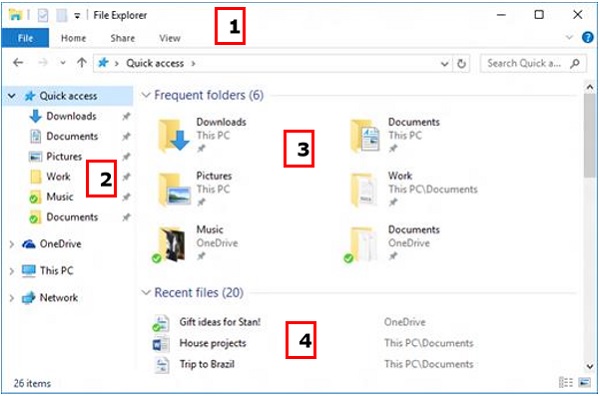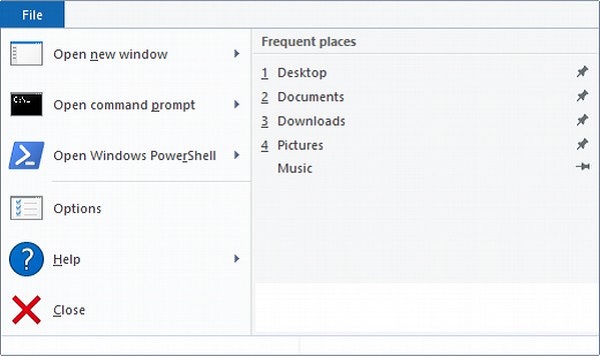
- Windows 10 - Home
- Windows 10 - Overview
- Windows 10 - Installation
- Windows 10 - Getting Started
- Windows 10 - GUI Basics
- Windows 10 - Navigation
- Windows 10 - Start Menu
- Windows 10 - Taskbar
- Windows 10 - Tablet Mode
- Windows 10 - File Explorer
- Windows 10 - Cortana
- Windows 10 - Notifications
- Windows 10 - Quick Actions
- Windows 10 - Cloud
- Windows 10 - Universal Apps
- Windows 10 - Multiple Desktops
- Windows 10 - Users Management
- Windows 10 - Security
- Windows 10 - Parental Control
- Windows 10 - Applications
- Windows 10 - Web Browsing
- Windows 10 - Networking
- Windows 10 - Virtualization
- Windows 10 - Remote Access
- Windows 10 - Backup and Recovery
- Windows 10 - Project Spartan
- Windows 10 - Apps Management
- Windows 10 - Email Management
- Windows 10 - Keyboard Shortcuts
- Windows 10 - System Tray
- Windows 10 - Media Management
- Windows 10 - Favorite Settings
- Windows 10 - Shortcuts
- Windows 10 - Phones
Windows 10 - File Explorer
File Explorer is the file management application used by Windows operating systems to browse folders and files. It provides a graphical interface for the user to navigate and access the files stored in the computer.

The main way to access the File Explorer is by clicking the folder icon in the Taskbar. After clicking the icon, the File Explorer window will open.

The initial File Explorer window is comprised of the following sections −
The File Explorer ribbon, which resembles the ribbon featured in Microsoft Office. The ribbon contains buttons for common tasks to perform with your files and folders.
The Navigation Pane gives you access to your libraries of documents and pictures, as well as your storage devices. It also features frequently used folders and network devices.
The Frequent folders section on the right features the folders youve worked with recently to allow for quick access to them.
The Recent files section in the lower part of the window features files and documents that youve opened recently.
The File Explorer Ribbon
In Windows 10, the File Explorer features a new ribbon toolbar, similar to the one featured in the recent versions of Microsoft Office. This ribbon contains buttons and commands for the most common tasks.

The Ribbon features four tabs, each with different commands. Among the tasks you can perform from the Home tab are −
- Copying and pasting files and folders from one place to another.
- Moving files and folders to another location.
- Copying files and folders to another location.
- Deleting a file or folder permanently or sending it to the Recycle Bin.
- Renaming a file or folder.
- Creating a new folder or other new items.
- Verifying or modifying the Properties of a document or folder.
- Opening a file or folder.
- Different options to select one or various files and folders.

The Share ribbon gives you different options to share your files and folders. For example −
- E-mailing or messaging a file.
- Compressing (Zip) a folder to take less space.
- Printing or faxing documents.
- Sharing with other users or networks.

The View ribbon allows you to change the way Windows displays your files and folders. Some of the changes you can make here are −
- Adding additional panes to show a preview or details of your files.
- Changing the layout of the files and folders from icons to list, and others.
- Sorting and arranging the contents of your folder.
- Hiding selected folders or files.
The File tab opens a menu with different options like −

- Opening an additional File Explorer window.
- Opening command windows for advanced users.
- Changing or configuring options about how File Explorer behaves.
